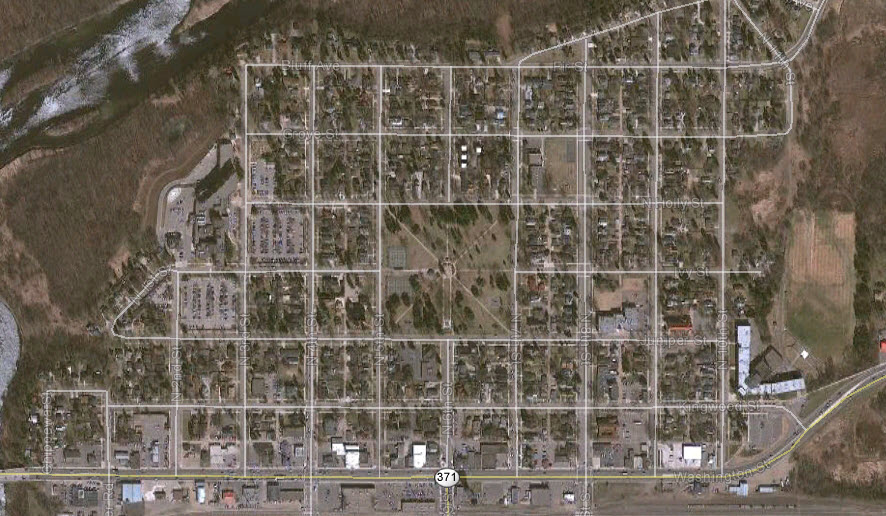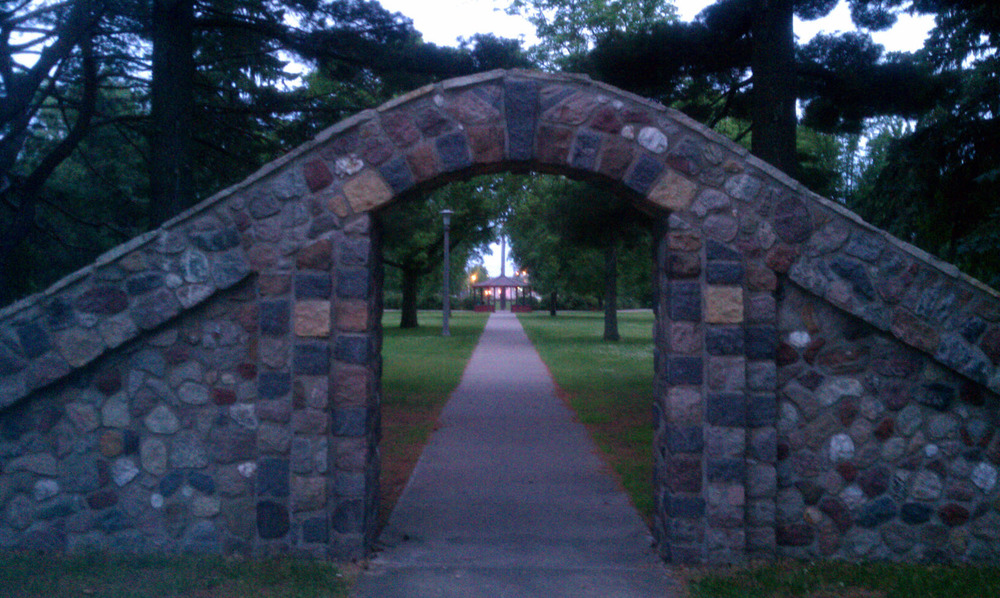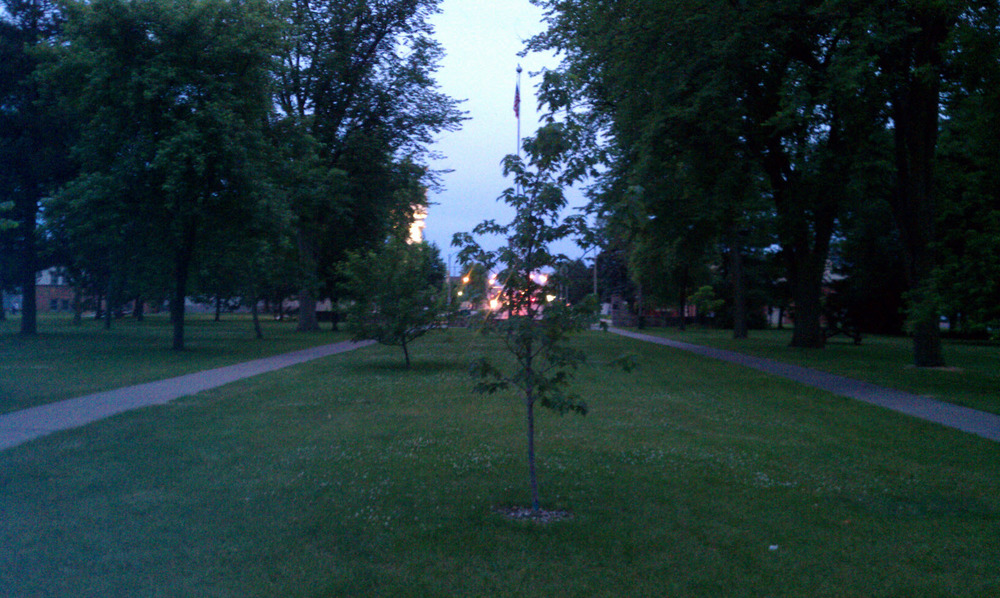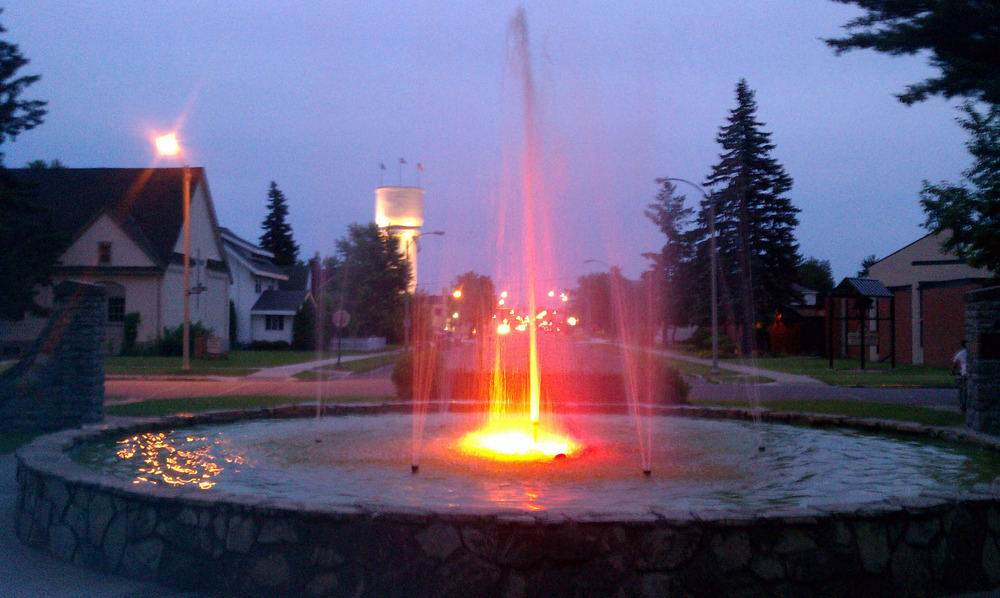Best of Blog: Just another park
This past weekend, while my daughters were at Sunday school and my wife was heading south for some cookie baking, I spent a depressing hour doing something I do far too often: driving around the neighborhoods of North Brainerd. This is the area I wanted to live in growing up. It is where I wanted to buy a house when I graduated from college and got married. It is someplace I still want to be, but I don't think I have the fortitude to torture myself day in and day out like that.
It is painful for me because I know how spectacular it could be. I am not aware of anyplace where so much has amounted to so little as in North Brainerd, MN. Among the assets in just this small area are two parks, three schools, a hospital, numerous churches, the Mississippi River, an athletic field, a beautiful boulevard and many, many historic homes. It is painful to see the place so run down; the parks neglected, the schools closed, the hospital and churches transformed into neighborhood parasites that chew up houses for parking, the river ignored and the homes undervalued.
Every person living in this neighborhood starts their day within eight blocks of downtown Brainerd. I would wager that, if we polled those residents, few have been downtown in the last month while the vast majority will have traveled to neighboring Baxter to eat, shop and probably work. Everyone who is in a position to do anything about it seemingly believes this is normal.
 North Brainerd (Google Earth)Our Best of Blog piece for today is one in our Brainerd/Baxter Strong Towns Series, a study of my twin hometowns. In a radio interview I did recently I was given about 15 seconds at the end of the show to talk about Gregory Park, the symmetrical green space you see there in the middle of the photo. If you listen to me talk, you'll hear the love in my heart for this place. It's not just another park to me.
North Brainerd (Google Earth)Our Best of Blog piece for today is one in our Brainerd/Baxter Strong Towns Series, a study of my twin hometowns. In a radio interview I did recently I was given about 15 seconds at the end of the show to talk about Gregory Park, the symmetrical green space you see there in the middle of the photo. If you listen to me talk, you'll hear the love in my heart for this place. It's not just another park to me.
---
Today, public parks are seen as an optional amenity to a community, something that you do in good times when you have the extra money or can get a donation or grant. In our pre-suburban development pattern, parks were looked at much differently. By working to understand the nature of our original park layouts, we can reveal the true character of our places and begin the process of unlocking the lost value stored in our traditional development pattern.
It has been a while since we have had an entry in the Brainerd/Baxter Strong Towns series. My twin home towns of Brainerd and Baxter are the perfect living experiments of the atrophy of an historic town (Brainerd) and the boom/bust cycle (Baxter), both inherent with the suburban pattern of development. You can read the introductory article for background on this series or you may wish to read the rest of the series, which is getting to book-length in its own right. Unfortunately, we are just beginning.
Last week, Justin (of podcast fame) and I grabbed a late night pizza after a meeting and decided to eat at Gregory Park. The park is one of my favorite places in Brainerd for some very complex reasons. While it embodies all of the decline and atrophy of the rest of the city, it holds a lot of hope and promise of renewal. I can stand in Gregory Park and hear the whispers of my ancestors, surrounded by reminders of what could be if we only understood what they were doing. I'm convinced that if we fixed Gregory Park, we could start slowing unwinding 50+ years of bad investments and neglect.
Now if you talk to anyone in Brainerd -- pretty much anyone inside or outside of the government -- they will probably agree that Gregory Park could use a little love. Some of the gardens need weeding, the grass could be better tended, the gazebo could use a little paint, the basketball court could use a new base, etc.... This is not the kind of neglect I am speaking of. What I am talking about is the complete misunderstanding of what Gregory Park is.
In its original design, Gregory Park was the focal point of the downtown of the city. It is the termination of Brainerd's original grand boulevard -- South 6th Street -- and the symmetrical axis on which the entire north side of the city is constructed. The intentional placement and design of Gregory Park was to reflect the value of this magnificent space through the downtown and all of the surrounding neighborhoods. You could stand anywhere along South 6th and see the park and, while standing on the axis of the park, have a framed view of Brainerd's prime boulevard.
It is this framed view that I am going to focus on today. What we have done to Gregory Park along this symmetrical axis reveals our suburban-era confusion over parks, how they provide value and how to capture that value throughout the city.
The picture below is of an arch at the north end of the park. We took the photo facing south. This arch was installed in the 1930's, along with some other rock work, all symmetrical to the north/south axis. The arch itself frames the view. You can imagine my ancestors, who inhabited this space as what we would today call "pedestrians" (back then, they just called them "people"), walking through this arch on their way downtown.

After walking through the arch, the view should be of the central garden, the fountain and the boulevard into the downtown, with the city's magnificent (and long ago bustling) commercial area visible in the background. Instead, you get the first hint that we have no understanding of this space. The view is blocked by this cheap-looking gazebo, which itself is completely random and out of place. Behind the gazebo you can see the alien spacecraft hovering in the sky at the top of the light pole.

Passing through the gazebo and the neglected (and poorly selected) shrubbery that surrounds the alien pedestal and "plaza" (which is now just settled and misshapen bricks), we should now be able to view the glorious downtown of Brainerd. But alas, we've given this park a nature band aid believing that the problem was a lack of trees. You can actually see how we messed up the vegetation on the sides a couple of decades ago too. Instead of copying the straight trunks and full tops lined up to frame the view from the right, we've selected different varieties on the left and placed them randomly. No symmetry. No views. And I'm sure there would be a protest if we removed these trees in the middle that are blocking the view, even if we did it to install a reflecting pool or some other appropriate feature.

Now we're past the Arbor Day rescue project and should be able to see the downtown only to discover the someone fell in love with street lights and decided to put them in the park. That and a flag pole. Again, there is no symmetry to any of this. No sense of place or purpose. It is as if someone randomly went out and placed this light (which itself is out of place and makes no sense) and then someone else randomly came along and put down the flag pole with this tiny flag. I don't have a problem with the flag, but put it where the alien light is and then make it big enough to not be an afterthought.

Now we're finally through the park, having walked the entire axis, before we even glimpse what used to be the commercial heart of Central Minnesota. You can see the fountain here -- well placed -- and the 1930's rock work on the edges of the picture again trying to frame the view. You can also understand now why the "historic" water tower was placed where it was and, if you imagine South 6th lined with magnificent offices, shops, hotels and theaters as it once was, why the castle design for the tower was not so silly as it now appears. It was all actually pretty cool.

Today that water tower is this odd structure, completely out of synch with the strip mall and parking lots it shades. People new to town gawk at it and think we're crazy to have built such a weird thing. If they only understood, we're not crazy, we have just lost touch with the meaning of our town.
On second thought, maybe in Gregory Park we have not lost touch with the meaning of our town. After all, there really is no grand boulevard anymore. It was long given over to the suburban-era obsession of moving cars at high speed. And there is no downtown to frame. Again, in the suburban era it was largely converted to space for storing our cars, the remaining businesses either torn down and replaced with drive-thru establishments or just plain neglected.
Maybe we've not lost meaning with our town. Maybe we're just trying to avoid looking at what it has become.
Strong Towns is a 501(c) non-profit organization dedicated to making our cities, towns and neighborhoods places of value. If you want to support our work, you can make a tax-deductible donation on our website.
